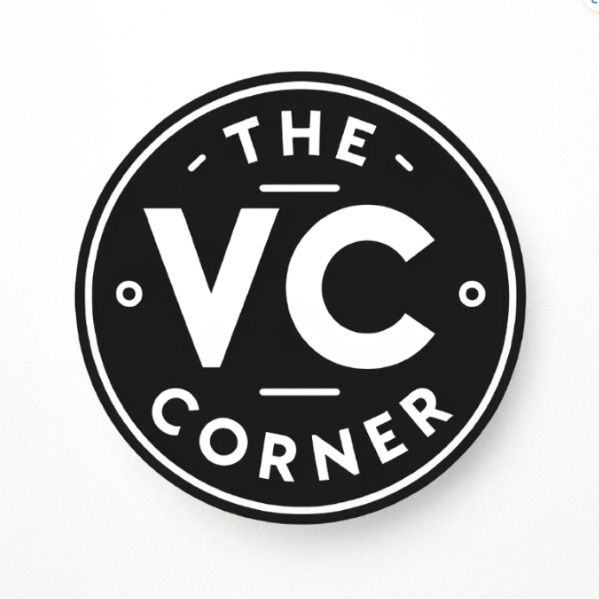The Internet Was Broken—So They Built an Escape Hatch for Writers
A few weeks ago,
and I sat down with —co-founder and CEO of —at Substack’s headquarters in San Francisco to record the first-ever episode of The VC Corner podcast.I’ve been using Substack for the past year and a half. It’s what powers this very newsletter—and it’s helped me reach over 1 million people per month, build an audience of 110,000 subscribers across two publications (The VC Corner and The Founders Corner), and make a living from writing and sharing ideas.
Substack isn’t just a tool—it’s the reason I can now write full time, angel invest in the best founders I meet, and share the learnings that help others do the same.
So it felt surreal to sit down with the person who made it possible.
is one of the most thoughtful founders I’ve ever spoken to. Before Substack, he co-founded Kik and scaled it to 300M users. Now, he’s leading a platform that’s redefining how writers, thinkers, and communities connect—with over 35 million monthly readers and 5 million paid subscriptions.In our conversation, we dove deep into how Substack started, what makes it different, and where it’s going next.
You can watch the full episode here, or keep reading for 8 key takeaways—with video clips from each.
1. Substack’s Origin Story: From Hacky Prototype to Creator Platform
The first version of Substack wasn’t even a product. Chris literally typed the first user into a database by hand.
There was no CMS. No onboarding flow. No design tools.
Just a thesis: writers should own their audience—and get paid directly.
Their first user, China expert Bill Bishop, made six figures on day one. That single moment proved the idea had legs.
“We didn’t launch Substack with a bang. We built it for one writer. It worked. Then we built from there.”
Sometimes product-market fit doesn’t roar. It whispers.
2. Early Substack Was Hand-Cranked—But the Vision Was Clear
There were no fancy dashboards or payment integrations in the beginning. Chris had to manually create every new newsletter.
But that didn’t matter—because the vision was so sharp.
“Writers shouldn’t be dependent on ads or algorithms. They should get paid by the people who care.”
That clarity of purpose is what helped Substack grow—one writer at a time.
3. Why Substack Became a Daily Habit for Readers
As Chris puts it:
“An app nobody opens is worthless. An app people use daily? That’s gold.”
Substack became sticky not because of tech, but because of trust.
Newsletters landed in inboxes. Subscriptions brought people back. And gradually, Substack became part of people’s routines.
4. How Substack Differs from Twitter, LinkedIn, and Ad-Based Platforms
Substack isn’t designed for clicks—it’s designed for commitment.
There are no ads. No algorithmic traps. Just real content from people you choose to support.
“People will hate-click something. But they won’t hate-pay for it.”
That’s the core difference. Substack rewards substance over slop. And it gives creators control that platforms like Twitter or LinkedIn never will.
5. Substack’s Growing Network Effect and Recommendation Engine
In the early days, it was all about the writing. Now? It’s a full ecosystem.
Discovery. Recommendations. Built-in payments. Social sharing.
As Chris says, they’ve moved from a weak to a strong network effect—and it’s only accelerating.
“The more great writers we have, the more readers join. The more readers join, the more writers succeed.”
This is how niche tools become movements.
Substack now serves over 35 million monthly readers and has more than 5 million paid subscriptions, making it one of the most successful creator platforms of the last decade.
6. Why Paid Subscriptions Are More Than Revenue—they’re a Vote
When someone pays for your work, they’re not just funding you. They’re voting for the world they want to live in.
“People are voting for depth over dopamine. For ownership over exploitation. That’s what makes this model powerful.”
Every subscription is a choice—to support better ideas and better incentives.
7. Substack Quietly Built What Web3 Promised
No tokens. No wallets. No hype.
And yet… writers own their audience, readers fund what they want to exist, and there’s no middleman.
“Substack is decentralized at the layer that actually matters—ownership.”
It turns out, you don’t need a blockchain to fix publishing. You just need a better model.
8. What Founders Can Learn From Substack
If you’re building something new, take notes.
Build for one person first
Ignore the noise—focus on value
Align your incentives with your users
Don’t be afraid to go against the grain
Chris Best and the Substack team didn’t follow the tech playbook. But they created a product that writers—and readers—genuinely love.
Final Thoughts on Substack, Creator Monetization & Platform Design
Substack changed my life.
It helped me go from writing in obscurity to reaching 1 million+ people per month. From being a passive consumer to an active creator. From funding my work with favors to funding it with freedom.
And it all started with one idea:
Writers should own their audience and be able to monetise it.
This conversation with Chris Best is a reminder of what’s possible when you build for depth, not dopamine.
Watch the full podcast here, and subscribe to get future episodes as we sit down with more builders, founders, and investors shaping the future.
Let’s build the internet we actually want to live on.










Share this post